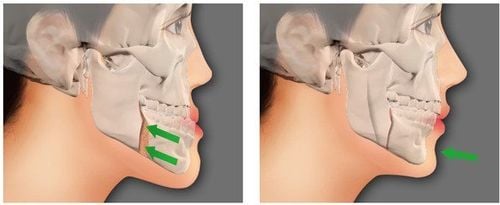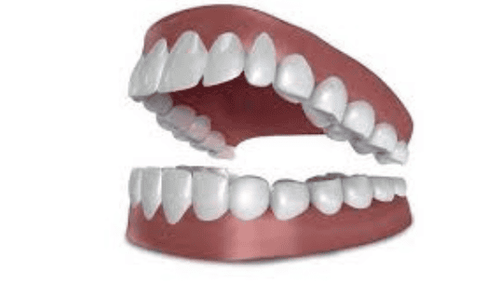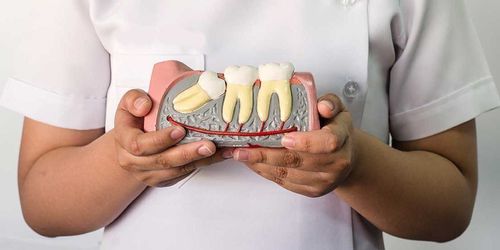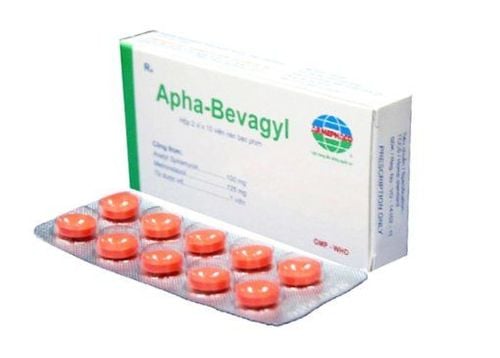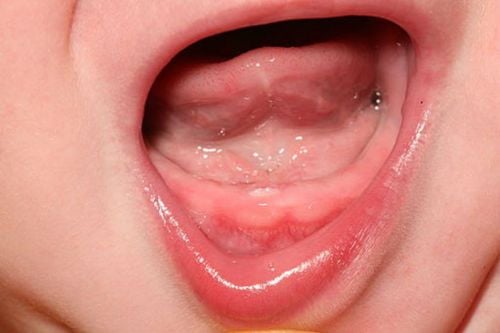This is an automatically translated article.
Posted by Doctor Pham Thi Huyen Trang - Dental - Jaw - Facial Unit, Interspecialty Department - Vinmec Times City International General Hospital.
Teeth 6 and 7 are the two main molars, playing a major role in chewing. However, the rate of decay and tooth loss is the highest.
1. Teeth No. 6
6 is the earliest permanent molar to erupt and has no corresponding baby teeth. Often children will erupt tooth number 6 around 6 years old, when children are still in the mixed dentition stage and are young, so the awareness of oral hygiene is still not good. Therefore, tooth number 6 is also a tooth that has early decay, often when it is discovered that it has a large cavity, a pulp, a heavy abscess... so the rate of early tooth loss is very high. Moreover, often children are busy playing, do not tell their parents that there are decayed teeth, or because parents think they are still baby teeth, so they do not need to be treated until discovered, it is often too late to have to remove them.
2. Tooth number 7
7 is the second largest molar, so the position of tooth 7 is in the same tooth of each person. For young children, it takes about 12-13 years of age when the baby tooth is replaced to erupt the 7th tooth. The 7th tooth plays an important role in daily chewing. The structure of tooth number 7 will include a crown with a large chewing surface, which helps in chewing, biting and crushing food well and the root part usually has 2-3 very strong and strong teeth. However, this is a tooth that is very susceptible to oral diseases because it is in the innermost part, difficult to clean, when it is deep, it is also difficult to detect, often overlooked. Tooth number 7 is also often impacted by tooth number 8 (wisdom teeth). The interdental area between the 7th and 8th teeth is often the place where food, plaque, tartar, foreign bodies are deposited, so it is easy to cause inflammation, tooth decay and abscesses.
Therefore, without proper care and oral hygiene, teeth number 6, number 7 are very susceptible to damage, causing complications including tooth abscess.
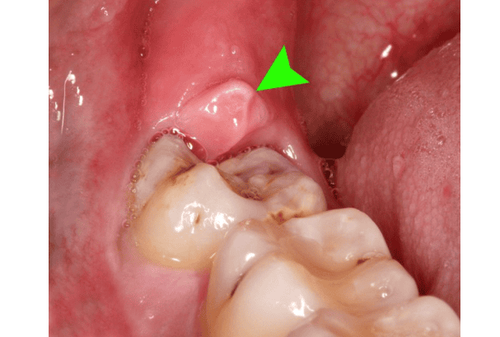
Vùng kẽ răng số 7 thường lắng đọng thức ăn nên dễ gây sưng viêm
3. Symptoms to recognize tooth abscess number 6, number 7
Like other teeth, tooth abscess 6, 7 usually has 2 main types:
Abscess around the apex Periodontal abscess Swollen gum tissue and fill with pus. Swollen gums look like a pimple near a diseased tooth.
Chewing is very difficult, because this is the main chewing molar, when chewing, the chewing force will press on the position of the tooth with an abscess, causing severe pain. The aches and pains are more frequent, even when there is no irritation to the tooth. Teeth become sensitive to hot, cold, spicy foods or to foods that are too chewy, sticky, or hard.
Swollen gum tissue, pink red and filled with pus. Swollen gums look like a pimple near the diseased tooth, sometimes white spots appear on the gums. Perforated acne can create a "fissure" and rupture to release pus. The corresponding location on the face is swollen. This is a clear sign of an infection.
Mouth has an unpleasant odor, enlarged lymph nodes under the neck, bitter mouth, causing fever or may cause a high fever, causing headaches and making the body tired and distracted.
Depending on the tooth has a cavity, dead pulp, dark discoloration or the tooth has periodontal bone loss, the pocket around the tooth is blocked by tartar, food debris, foreign body...

Đau nhức răng khiến cơ thể mệt mỏi và có thể lên cơn sốt
4. The difference between tooth abscess 6, 7 and abscess 8 (wisdom tooth)
8 is the innermost tooth, usually erupts at the age of 18 to 24, so it is also called wisdom tooth. Wisdom teeth are often misaligned, partially or completely hidden because when they erupt, there is not enough space left in the jaw and often cause pressure on the adjacent teeth. Number 8 teeth also often have very little chewing function due to misalignment. Moreover, the wisdom teeth that are misaligned are often the cause of local inflammation (inflammation of the periodontal pocket), causing caries in the adjacent front teeth due to food, plaque, foreign bodies accumulating, causing caries under the roots of the teeth. 7 and very common is tooth abscess number 8.
Therefore, there is a difference in the treatment direction of tooth abscesses number 6, 7 and 8. While dentists tend to find ways to preserve teeth number 6, number 7 ie root canal treatment after antibiotic treatment, draining infected teeth, with tooth number 8 doctors tend to removed to avoid the next recurrence and avoid affecting the adjacent teeth.
Symptoms of tooth abscess
8: swelling and pain in the tooth area 8, increased body temperature, swollen lymph nodes at the site, bad breath and especially the symptom of "jaw tightness".

Bệnh nhân thường được chỉ định nhổ răng khôn khi bị đau nhức
5. Solution for tooth abscess treatment number 6, number 7
As mentioned above, the purpose of the treatment of teeth number 6 and 7 is to remove the infection and try to preserve the tooth.
If the doctor determines that your tooth can still be kept, it means that the tooth has not been completely damaged, it can be restored. The doctor will scrape the diseased tissue from the tooth, remove the dead pulp, clean the canal and then seal it with biological material.
For the abscess area, the doctor will make an incision and drain the pus and diseased tissue.
After the root canal treatment is complete, depending on the extent of the damage of the tooth, the doctor will conduct cosmetic dental fillings or porcelain crowns.
In case the abscess is severe, the tooth is damaged a lot, the prognosis cannot be kept, the doctor will appoint tooth extraction to drain the pus cavity, relieve tooth pain quickly. After tooth extraction, the doctor advises the patient to quickly replace the implant to prevent the consequences of tooth loss such as shifting teeth, bone loss, affecting chewing function.
If the abscess is caused by periodontal: the doctor will remove tartar, scrape the pocket around the tooth, scrape out the pus, prescribe antibiotics, and relieve pain.
To register for examination and treatment of oral health problems at Vinmec International General Hospital, you can contact the nationwide Vinmec Health System Hotline, or register for an online examination HERE.




